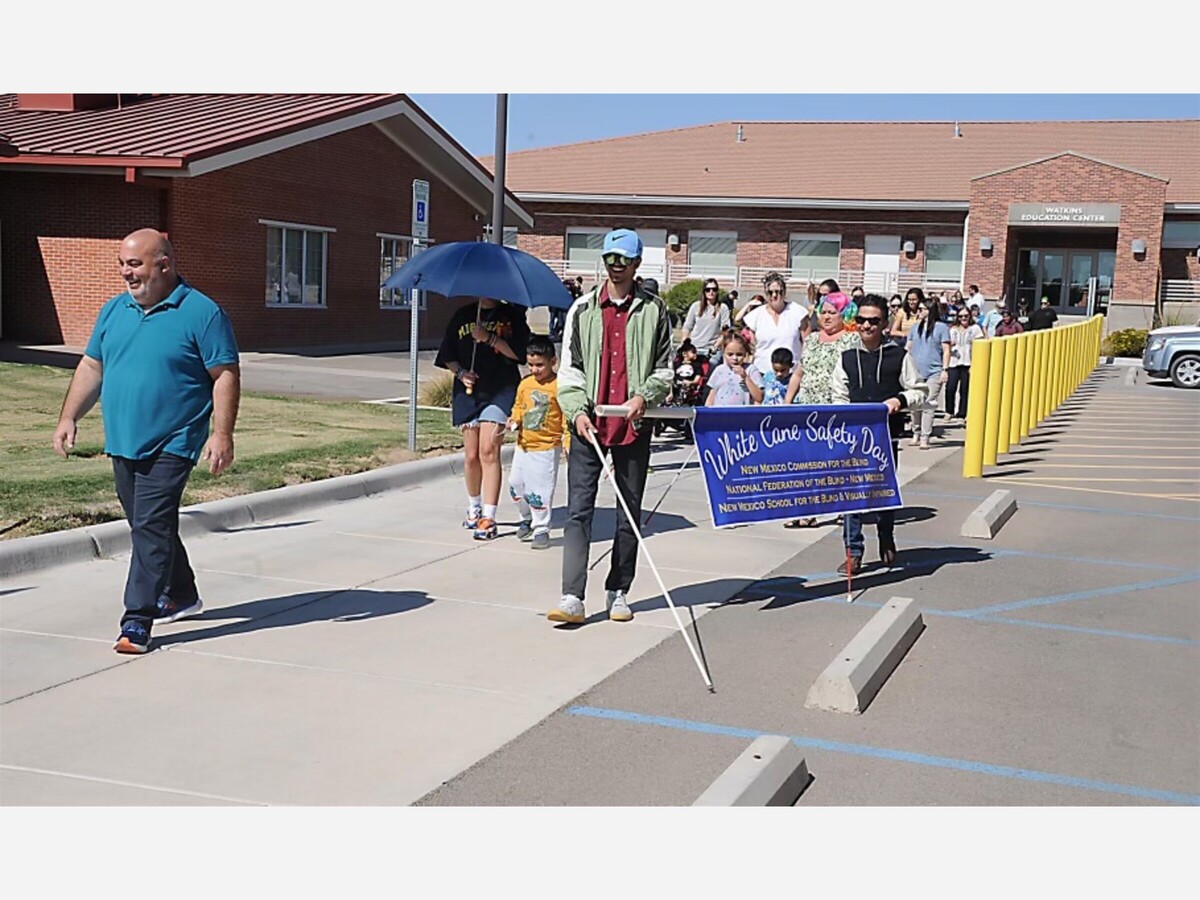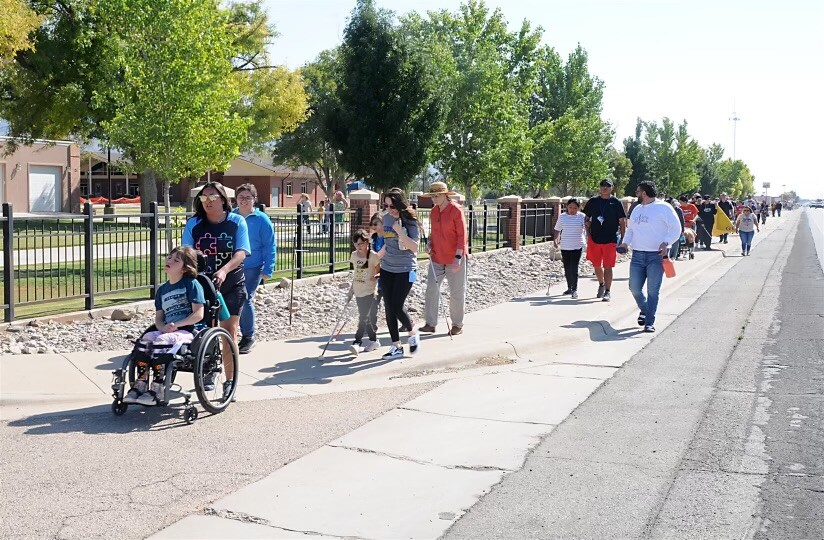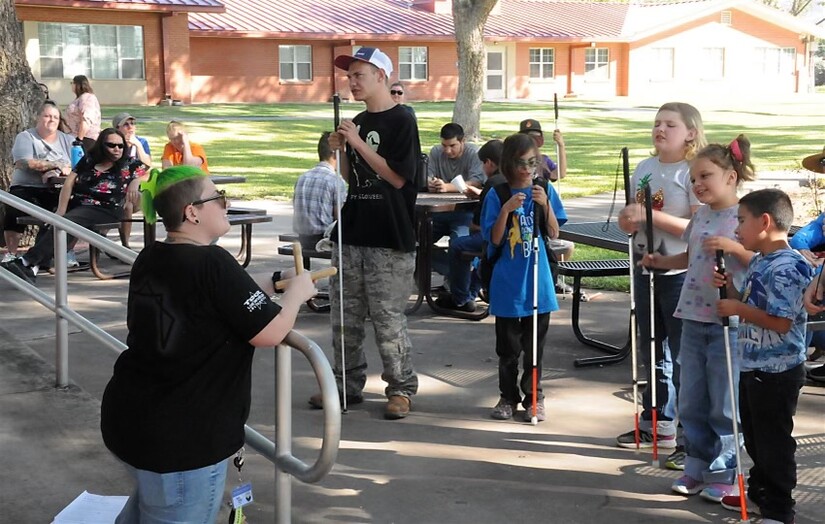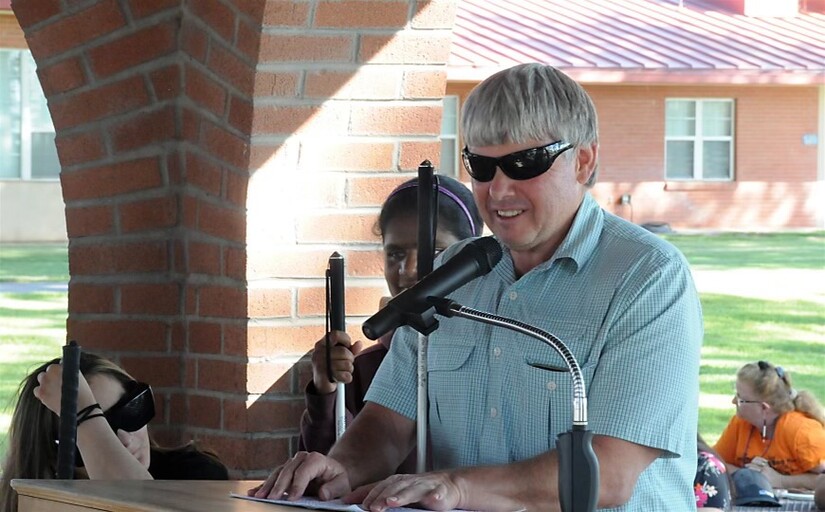Image


You've probably crossed paths with us—the folks with white canes and dog guides, and maybe some wheelchairs and other mobility aids thrown into the mix. We're the blind community of Alamogordo. While I can't claim to speak for everyone, I'm here to offer you a fresh perspective on Alamogordo and its stories, straight from our Blind Eye View. This column was born from a simple yet brilliant idea cooked up by Chris Edwards and yours truly. We thought, 'Why not share the experiences of the blind community and help you appreciate our town in a new way?’ And just like that, this column came to life!
October 15 was Blind Americans Equality Day, also known as White Cane Safety Day. Public attitudes toward disability in general have evolved over time due to changes in vocational rehabilitation and access laws like the Americans with Disabilities Act. As a result, people with disabilities are a more visible part of public life than we used to be. Be that as it may, society still battles with misconceptions about disabilities that tend to limit our opportunities to participate in community life. So, on White Cane Day, we do the very thing that seems impossible to a lot of people: we walk confidently along the busiest streets in town and in the largest number possible. We do this for two reasons. First, we want to show you that we can navigate through life effectively and independently using our preferred travel tools. Second, we want to demonstrate that we are part of the community and want to be involved in all its aspects.
 Photo Caption: NMSBVI students, staff, and guests walk in and around campus for White Cane Safety Day. Photo taken and described by Carla Gonzales.
Photo Caption: NMSBVI students, staff, and guests walk in and around campus for White Cane Safety Day. Photo taken and described by Carla Gonzales.White Cane Day celebrations are for the blind community as much as they are for the public. Most White Cane Day celebrations include some kind of rally where attendees learn about White Cane Day, pay respects to those who helped bring about the passage of White Cane Laws, and celebrate the independence of blind people generally.
Originally, White Cane Day was meant to help raise awareness of the White Cane Law and the benefits of using a white cane for those of us who are blind. You may have heard of the White Cane Law through drivers' education or other awareness efforts. Most drivers learn that the White Cane Law requires drivers to stop and give the right of way to dog guide and white cane users. That’s only part of the story of the White Cane Law.
The White Cane Law was what one could call the precursor to the Americans with Disabilities Act. It was the first legislation of its kind to guarantee the rights of blind people to public spaces. In 1967, the first White Cane Law was passed in New Mexico. Before then, a blind person could be denied access to public accommodations and could be held legally liable should something happen to them, even if it was by no fault of their own. This situation was called Contributory Negligence. The only way a blind person could avoid liability was to have a sighted person with them at all times. At the same time, Lions’ Clubs were trying to raise awareness of the white cane because, at that time, most blind people just didn’t have the same kind of travel skills that we do today, and white canes were quite visible in the much simpler driving environment of that time.
 Photo Caption: NMSBVI Music Instructor Dani Delap leads students in a song for the White Cane Safety Day presentation. Photo taken and described by Carla Gonzales.
Photo Caption: NMSBVI Music Instructor Dani Delap leads students in a song for the White Cane Safety Day presentation. Photo taken and described by Carla Gonzales.Alamogordo’s White Cane Day celebration took place on October 18. Members of the blind community traveled a route taking us down White Sands from Catalina to Indian Wells. Led by NMSBVI students and staff, our group of about 75 included members of the National Federation of the Blind of New Mexico and the Orientation Center for the Blind. Participants represented a wide range of travel tools. White canes and dog guides were notable among them.
We gathered at the school’s rose garden for speeches and other performances. Speakers included NMSBVI Superintendent Patricia Beecher, Orientation Center Director Jamie Sibson, and National Federation of the Blind member Jondalar Sekhon. The White Cane Day Proclamation, a document signed by Governor Lujan Grisham, was read to the crowd in Braille by Jamie. Craig Cooper gave the keynote address. He reminded us of the importance of self-acceptance because that self-acceptance is what a blind person needs to use blindness tools confidently in everyday life. Craig is an instructor at NMSBVI, but you may know him as a DJ at 94Key.
 Photo Caption: NMSBVI Life Skills Instructor Craig Cooper addresses the audience at the White Cane Safety Day presentation. Photo taken and described by Carla Gonzales
Photo Caption: NMSBVI Life Skills Instructor Craig Cooper addresses the audience at the White Cane Safety Day presentation. Photo taken and described by Carla GonzalesAlamogordo, a town full of surprises and vibrant characters, continues to reveal its unique blend of diversity and community spirit. NMSBVI and the Orientation Center have been woven into the fabric of this town for generations, becoming staples of our community. Through this quick journey into the history of the White Cane Law and a sneak peek at this year's White Cane Day celebration, my hope is to offer you a fresh perspective on this aspect of our town—one that radiates with pride, unity, and the indomitable spirit of our blind community.
Until next time, be well and stay ALAMOGORGEOUS!
Note: Story Author By Jedi Moerke is a contributor to AlamogordoTownNews.com and is a strong community mentor. His periodic column is a new addition to our portfolio of citizen authors and community advocates.